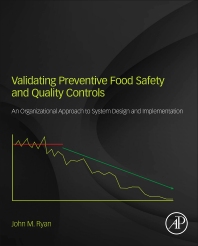Although food safety already is the group’s perceived strength, the Refrigerated Foods Association (RFA) chose to add even more “meat” to the organization’s upcoming annual spring convention. They invited one of the world’s largest meat processors, Keystone Foods, to provide another perspective on food plant sanitation.
upcoming annual spring convention. They invited one of the world’s largest meat processors, Keystone Foods, to provide another perspective on food plant sanitation.
Make no mistake. RFA members are no strangers to the rigors of food safety. These are many of the nation’s leading processors of refrigerated prepared entrees, side dishes, soups, salads and desserts. As such, many are quite familiar with the daily handling and processing of raw vegetables and processed meats.
Yet even the largest of these companies has just a half-dozen plants or so. On the other hand, Keystone Foods, West Conshohocken, Pa., has 54 plants and distribution centers in 14 countries. RFA’s guest speaker will be Dave Herweyer, Keystone’s corporate global sanitarian. A 37-year professional, Herweyer first worked in Michigan as a public health sanitarian at local and state levels. Later he joined the Sara Lee Corporation’s meat group for 17 years in sanitation, quality assurance and operations. He then served as food safety specialist with two chemical suppliers before joining Keystone Foods.
Bill Schwartz is RFA’s technical committee chairman and chief food safety officer for Orval Kent Food Company Inc., a national refrigerated foods processor based in Wheeling, Ill.
“Food safety is critical to the refrigerated food industry and our meeting draws those individuals who hold food safety at the top of the list of corporate priorities,” he says. “When it comes to producing safe, wholesome food, nothing is more important than having a clean plant and sanitary equipment. That’s why we asked Dave to share his hands-on, in-the-plant experience from facilities around the world.”
says. “When it comes to producing safe, wholesome food, nothing is more important than having a clean plant and sanitary equipment. That’s why we asked Dave to share his hands-on, in-the-plant experience from facilities around the world.”
Herweyer told Refrigerated & Frozen Foods that he travels extensively to audit Keystone’s meat processing facilities and distribution centers, as well as suppliers’ operations.
“We conduct multi-day visits at our facilities to conduct food safety and sanitation audits,” he notes. “And because every plant is different, we look at that facility’s suppliers, ingredients, physical structure, equipment and other areas.
“We assist the various teams in our quality assurance, operations, sanitation, engineering and maintenance departments,” he adds. “We’re big on emphasizing continuous improvement.”
Understandably, Herweyer also is “big” on food safety and sanitation issues. That’s because the stakes of any food safety incident are so large for consumers and the company itself.
“Product recalls and recoveries occur much too often and are challenging to address in the media,” he says. “That’s why we need to remember ‘Murphy’s Law,’ which says that if it can go wrong, there is a good chance it will. It’s important to adhere to Good Manufacturing Practices, industry best practices and all regulations. Sometimes, even the smallest improvements can yield good results.”
Herweyer goes on to list just a few small details – such as equipment design, cleaning agents, water and air, and employee development – that he regards as big issues.
Equipment: Keystone built and equipped a meat and poultry processing facility in Gadsden, Ala., in 2009. Herweyer notes company officials enjoyed the opportunity to plan and develop every facet of the facility from the concept stage. He along with others from the corporate food safety and engineering teams (as well as operations and management officials from the plants) visited equipment suppliers to ensure that all new machinery would be designed for quick, thorough, and effective sanitation. He suggests that all machinery supports and framework utilize solid or angular steel rather than any hollow tubes where pathogens could grow when stress cracks or other compromises occur.
Floors, drains and lighting: Herweyer says many food plants have used anti-slip grating made from plastics and other materials that, ultimately, are too hard to clean. What’s better, he argues, are the continuous types that utilize computer assisted weld points and ‘rough’ stainless steel chips embedded in the surfaces. He recommends AlGrip®, SlipNOT®, DiamondPlate® flooring options with anti-slip enhancements (“replacements that give us both advantages: personnel safety and food safety”).
Herweyer notes that Keystone’s Gadsden, Ala., facility also features state-of-the-art facility applications, special floor drains (where individual drain components may be quickly removed and sanitized), lighting fixtures compatible with daily wash-downs and designated storage locations for machine components during sanitation and maintenance.
Cleaning agents: Cleaning chemicals are a significant sanitation cost – second only to labor and in many cases, ahead of energy. Herweyer suggests that too many processors treat chemicals like commodities and simply choose to buy on price.
“I don’t subscribe to that,” he says. “Although we’ve mandated some standards, we also like to work cooperatively and utilize the expertise of our suppliers; things that may be missed if looking only at cost instead of value. We bring suppliers in on a pre-determined frequency as an extra set of eyes for problem solving or suggestions for challenging applications.”
Herweyer says there are varying levels of quality and effectiveness of commercial cleaners and the least-cost product may not be the most effective nor least-cost cleaning option in the long term. He notes, for example, that the most effective smokehouse cleaners often achieve that status due to the presence of a good rinse agent which adds to the initial cost but provides value when considering the cost of extra labor involved in overcoming the problems associated with less expensive formulations.
Another example of a more complex formulation adding value? Herweyer says the foaming application of sanitizers can help reduce the micro soil loads in most plants. Moreover, these applications are better because they allow greater contact time especially on vertical surfaces.
Water, air: Herweyer says water often represents a “pitfall” area for many food plant sanitation programs.
“Very frequently, adequate hot water is not available for the entire cleaning shift,” he notes.
Herweyer recommends that plants maintain water temperature requirement of central rinse systems at 140°F minimum. The physical and chemical reactions during the application of commercial cleaners and degreasers are more effective at this level. Combined with adequate volume, this temperature allows for the decrease in temperature when the water contacts equipment surfaces while retaining effectiveness of the chemicals. Keystone also uses in-plant air handling and circulation systems to quickly dry processing rooms after sanitation. Micro levels are less in dry environments.
Invest in people
Great sanitation products and practices aren’t worth mentioning … without people, says Herweyer. Thus, he turns any conversation away from sloped metal angles – toward the human resources angle.
angles – toward the human resources angle.
“It’s rare to find sanitation people with 10 to 15 years experience. The rewards are more enticing in other fields and many leave,” he says. “We have to say ‘enough’s enough’ and do more to keep good people. Right now, you either have to ‘build’ or ‘buy’ a good sanitarian.
“The food processing industry is challenged with higher than desirable turnover in this area,” he adds. “Yet, we’ve decided to try to do more in selecting and training employees to retain them. We treat it like an entry-level career position. We think of the people that run our cleaning crews as an essential part of plant management . . . and it goes a long way when management spends time with a crew. There’s nothing better than a pat on the back and any time an official spends time with the sanitation crew, it’s worth it.”
It’s here that Herweyer draws an important conclusion.
“In my role, I look at equipment very carefully. Then again, if you don’t provide the time, tools and talent to your maintenance and sanitation people – you put your company at an avoidable risk. Smaller companies may not have the same resources but it’s still a matter of focus on these priorities that is a proven winner.”






